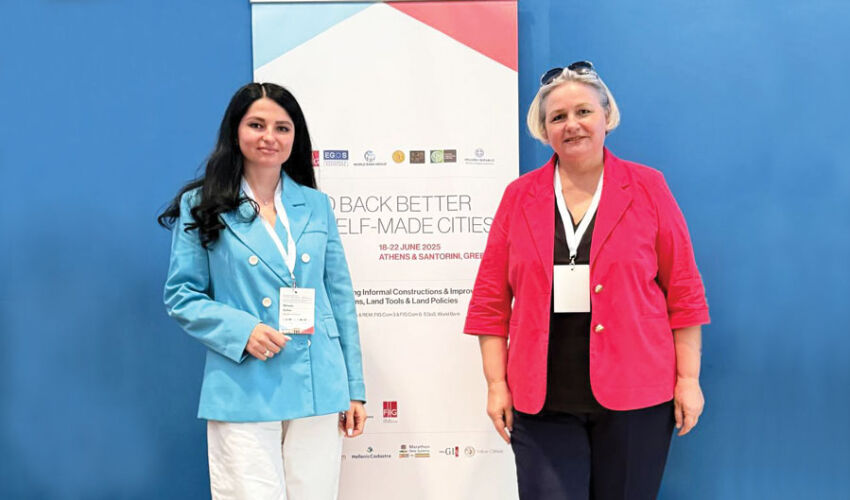
Mihaela Sultan and Svetlana Dogotaru
The situation with informal buildings in the capital is so serious that it became the subject of a presentation at a specialized conference in Athens. It was presented by the chief architect of Chisinau, Svetlana Dogotaru.
Chisinau after 1990, like many capitals in the post-Soviet space, underwent rapid and often uncontrolled urban transformations, the study notes. This period was marked by a long legislative vacuum and inconsistent application of existing urban planning norms. An essential element of this process was the uncertainty regarding the ownership of land and buildings: many plots had no clear legal status, were inherited, occupied or sold outside the legal framework.
In parallel, increased internal migration due to rural economic decline led to increased pressure on the existing housing stock. The acute shortage of affordable housing, especially for vulnerable groups or low-income persons, has catalyzed the proliferation of illegal construction. In many cases, the lack of response from the city administration was perceived by the population as a tacit form of acceptance or even encouragement of unauthorized construction.
Informal constructions in Chisinau are unevenly distributed over the territory, but are found in almost all types of urban and suburban zones. However, Truseni, Codru, Bubuechi, Durlesti stand out. These settlements, located on the administrative outskirts of the municipality, have become real poles of residential development over the last two decades.
However, this expansion has often occurred in the absence of updated urban planning tools or clear rules for the building regime. Many of the individual houses or residential complexes have been built without building permits, on lands with uncertain legal status that have not been properly integrated into the built-up area. These areas often lack utility networks (water, sewerage, gas, electricity) or practice informal connections to existing infrastructure.
In the built-up urban neighborhoods of Chisinau, informal construction often takes the form of individual interventions into the existing housing stock. The most common practices include:
- unauthorized extensions in the courtyards of apartment buildings;
- closing balconies or converting them into living spaces without the necessary permits;
- first floor extensions, conversion of commercial premises into apartments or vice versa without the necessary permits;
- illegal extensions or risky structural changes affecting the stability of the building.
The authorities often turned a blind eye to informal construction to avoid conflicts with the population or due to lack of political will. In some cases, institutional corruption facilitated the issuance of building permits retroactively, without respecting the law.
The authors of the presentation note that an accurate assessment of the scale of informal construction in Chisinau is difficult due to the lack of a comprehensive monitoring system. However, based on field observations, requests for legalization and preliminary research, it is estimated that about 15-20% of individual houses in the suburban area were built without permits. In some suburbs, such as Truseni, Bubueci or Codru, the share of informal housing may even exceed 30%. To this should be added hundreds of cases of unauthorized extensions, additions or interventions in apartment buildings.
Faced with the spreading phenomenon of informal construction, the municipal and central authorities over the last decade have outlined several strategic directions to control and correct the chaotic development of the city. Although some of these measures have been enunciated in public policies, city plans or strategic documents, their implementation has been partial or fragmented.
One of the most important initiatives has been the revision of the city’s General Development Plan, the framework document that regulates the use of territory at the municipal level. In parallel, it is planned to develop detailed urban plans in areas with a high density of unauthorized interventions.
It is proposed to create “regularization zones”, a strategy involving the delineation of perimeters in which existing informal constructions can be preserved and legalized. Provided they meet certain criteria of safety, interoperability and accessibility. This eliminates the need for unnecessary, costly and often socially unrealistic demolitions.
The Urban Development Code of RM (in force since January 2025) introduces a special procedure for recognizing the legality of constructions made without a building permit, after the expiry of the statute of limitations for the application of sanctions or demolition orders. In such cases, local authorities may issue a building certificate based on a technical and urban planning assessment that establishes whether the building meets minimum safety requirements and can be reasonably integrated into the built context. At the same time, the Code allows for the establishment of compensation payments in order to respect the principle of fairness to legal developers.













